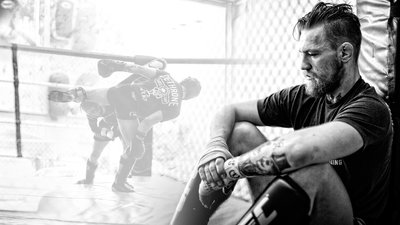The UFC Octagon separates human weapons from the rest of the human race. It's where elite mixed martial arts (MMA) athletes meet to test themselves, and 145-pound champion Conor McGregor is leading the charge.
There's something unique about McGregor. He has an aura surrounding him that makes everything he touches turn to gold in the sport of MMA. He's got an energy like Arnold Schwarzenegger had when he stepped into the gym, or when Michael Jordan took to the basketball court. He's known as "The Notorious" for a reason.
McGregor's Magic Numbers
- 13 seconds: McGregor vs. Aldo, the fastest title fight in UFC history
- 16,516 attendees: McGregor vs. Aldo, the highest ever for a UFC event in Las Vegas
- $622,000: earnings per second for his title fight vs. Aldo
- First undisputed Irish MMA champion
- 17 knockouts in 19 pro fights
Mostly, McGregor wins fights with his fists. Contests usually conclude with his opponents lying in a heap and him collecting a check with a hefty set of zeros. McGregor's sharp tongue has also drawn the limelight as much as his fighting style and achievements in the UFC—MMA's elite league—but he's backed up everything he's said so far. "I don't just knock them out; I pick the round," McGregor boasts.
And when the Las Vegas lights were on him for his shot at the UFC featherweight title, he delivered by beating José Aldo, one of the most dominant champions in MMA history. The KO took just 13 seconds. McGregor predicted he would finish the Brazilian champion in the first exchange, which is exactly what he did.
That decisive and devastating moment showed there is more to McGregor than just powerful hands and trash talk. The way he moves is different from anyone else in the sport. He has built a body with the nimbleness of a cheetah, the striking speed of a venomous snake, and all the power of a bull.
McGregor's training principles might not be what you expect. He doesn't work his muscles to a pulp in the weight room. Instead, his success is crafted around listening to his body and doing what he feels is necessary at the time. Unlike other fighters, a strict regimen has no place in his life.
"I wake up, I drink water, I stretch, I begin to loosen up, and then I continue moving throughout the day," McGregor says. "I'll hit the gym or whatever I feel like at that particular time, or I'll take a class of taekwondo, jiu-jitsu, yoga, or capoeira. Sometimes, I'll box. Variety is the best way. For me, regimen doesn't work."
McGregor's is a new approach that's paying big dividends.
Bust A Move
Before McGregor painted the UFC crowds with the tricolor of the Emerald Isle, he was a working-class kid from a Dublin suburb. His fighting journey began when he was a fresh-faced, 12-year-old boy who stepped into Crumlin Boxing Club—a gym with a history dating back to the 1930s. He honed his craft at the SBG Ireland under the tutelage of head coach John Kavanagh, who's been a vital cog in the McGregor machine.
Their innovative methods have caused other athletes in the UFC to rethink their own training. "I feel like MMA became about lifting weights and training heavy and sparring heavy rounds," explains McGregor. "I was not interested in that. It's the brain that makes the body move right and left, so you must nurture that.
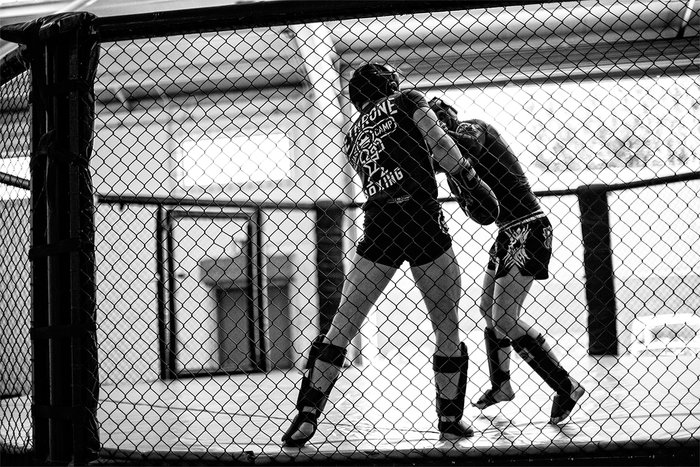
"It's not about lifting heavy and sparring hard. It's about the body being loose and flexible and having great balance; that's the basis of martial arts."
"It's not about lifting heavy and sparring hard. It's about the body being loose and flexible and having great balance; that's the basis of martial arts. That's what I'm doing. I'm trying to learn all the ways the human body can move. I truly feel I am only a white belt in the true spectrum of movement, but my competitors have yet to even begin. I think you should train everything, but you can't become obsessed with training just one style. I'm open to training in anything."
McGregor specifically brought in movement coach Ido Portal to help with preparations for his world-title fight. The 27-year-old embraced everything about Portal's philosophy and continues to work with him, utilizing various techniques to improve his timing, agility and power.
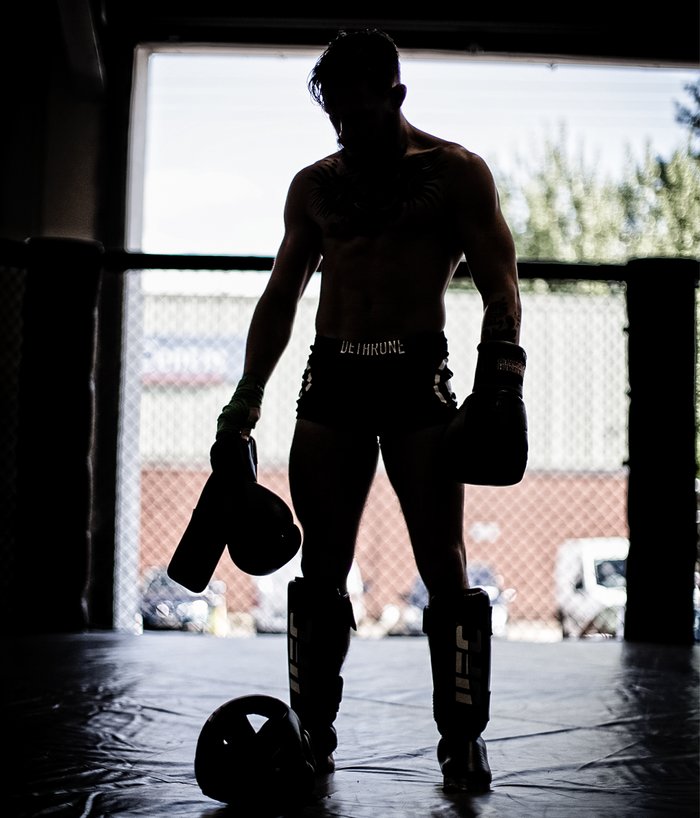
"Conor is bringing fluidity, rhythm, and angles to the cage," Portal says. "They're unorthodox and allow him to assume different postures, reach the unreachable, and almost teleport himself to appear in unexpected places. He is a very misunderstood fighter. A lot of people attribute the successful knockouts to the application of techniques, but they miss out on what's not directly visible. That's where I think he is even more powerful and successful.
"Right now, Conor McGregor is leading the movement revolution in MMA. He brings such variety and movement ability, focusing much less on the pure muscle layer, brute strength, or endless stamina that is actually very wasteful at times. I think Conor is very open to exploring more and more, and he is very quick to apply things."
Portal applied his movement philosophy to MMA training and is at the forefront of the sport's shifting methods. This former member of the Israeli military is also an insightful student of martial arts. "MMA is a clash between the movement school, the softer school, and the intelligence school," he says. "The right contact in the right position does not have to be harsh. It can be very soft and devastating at the same time."
"There's another school of hard knocks, which involves biting down on the mouthpiece and hammering each other in sparring," Portal adds. "People can work on the hardness so much that the body starts to crack and breaks afterwards. I think this is why Conor is so successful, because he has so many different layers: his showmanship, his philosophy, his martial arts, and his movement. He has a very harsh softness to the way he moves."
Those terms seem to be at odds with one another, but are in fact the true secrets of McGregor's spellbinding success.
Workouts: Unlock Your Primal Self
Use this Conor McGregor-inspired workout to unleash your fighting beast. In this three-part session, you'll warm up with flexibility, go on to conditioning, and finish with a bodyweight circuit.
Perform this workout consistently and you'll improve your flexibility, coordination, and balance; bolster your mental endurance; increase your agility; and give your cardiovascular system a boost.
Workout 1: Flexibility And Dynamic Stretching
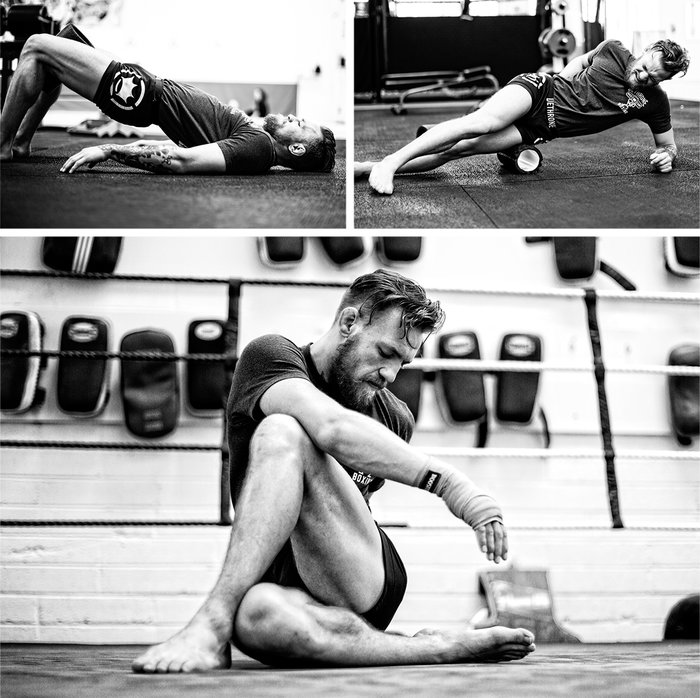
Do each move for one minute.
Muay Thai Knees
Stand in a fighting stance. Step through with your back leg, driving your knee upward as you push your hips forward. Repeat with your opposite leg.
Shoulder Rotations
Stand with your feet shoulder-width apart. Hold your arms up and rotate them forward and backward.
Leg Swings
Face a wall, and place both palms flat against it. Rotate your hips as you swing your leg outward to get a good stretch on each leg.
Hip Circles
Stand with your feet hip-width apart, with your hands on your hips. Push your hips forward and circle for the allocated time in both directions.
Neck Bridge
Lie on your back with the soles of both feet touching the floor and your knees bent at 90 degrees. Lift your heel off the floor and push back gently until your head and toes are the only points of contact with the ground. Hold, then relax and repeat.
Workout 2: Static Stretching
Hold each move for 30 seconds.
Back Roll
Sit on the floor with your legs slightly bent in front of you. Roll back until your toes touch the ground and you're in an inverted position.
Sit-Through Abdominal Stretch
Lie on your stomach with your palms in line with your armpits. Breathe in, and push your upper body up as you breathe out. Your legs and groin should be flat and the small of your back should be arched.
Sit-Back Shoulder Stretch
Begin on your knees. Sit back toward your feet and stretch your arms forward as far as you can. Your face should be near the ground.
Lying Leg Stretch
Lie flat on your back with one knee bent at a 90-degree angle. Rest your other leg against it. Pull your knee toward your chest to flex your knee, hip and hamstring.
Seated Butterfly
Sit on the floor with the soles of both feet together. Hold your feet and gently push down on your knees with your elbows to stretch your groin.
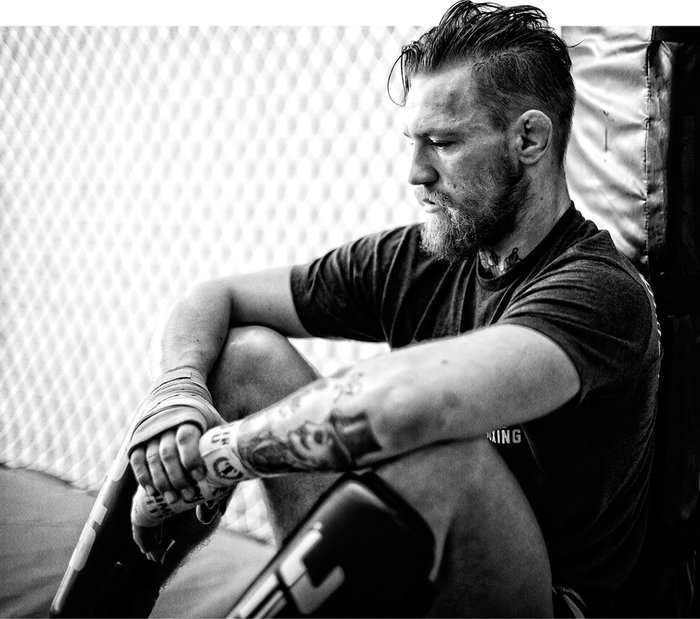
Locomation Conditioning
Do each move three times for 80 feet.
Duck Walk
Sit down from a staggered squat. Your back foot should be on the ball with your butt resting on your heel. Your front foot is placed flat in front of you and is used to initiate the motion. Pull yourself using your hamstrings, and transition from the ball of your foot to the flat of it.
Benefit: decreases patella-femoral stress (knee pain).
Horse Walk
Start in a low, wide stance with your knees bent. Twist your heels out as far as they can go. From there, shift your weight to each side by bending one knee as you step forward in your wide stance and straighten your other leg.
Benefit: develops groin and hip strength.
Lizard Walk
Start in a high push-up position. Move one hand and the opposite foot forward. With your leg bent to the side and off the ground, do a push-up. After the push-up, move your opposite limbs in the same way and repeat to advance forward.
Benefit: improves core control and hip mobility.
Ostrich Walk
From the standing position, lower yourself to a touch-toes position. While bouncing up, move one foot forward, keeping both knees firmly locked. Pull yourself using your abs, and as you bounce upwards, move your other foot forward. Remember to touch the floor as you go.
Benefit: promotes flexibility of posterior chain.
Workout 3: Bodyweight Circuit
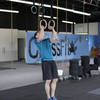
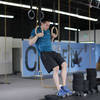

BodyFit
$6.99/month- 2,500+ expert-created single workouts
- 3,500+ how-to exercise videos
- Detailed workout instruction
- Step-by-step workout tips
- Training at gym or at home
- Access to Workout Plans
- Access to Bodyfit App
- Store Discounts
Already have a Bodybuilding.com account with BodyFit? Sign In

What comes with BodyFit?

- Instructional Videos
Don't risk doing a workout improperly! Avoid injury and keep your form in check with in-depth instructional videos.

- How-to Images
View our enormous library of workout photos and see exactly how each exercise should be done before you give it a shot.

- Step-by-Step Instructions
Quickly read through our step-by-step directions to ensure you're doing each workout correctly the first time, every time.
Notorious Nutrition
A fighter's diet is perhaps the most important aspect of keeping him in shape, particularly in the lighter weight classes. Food is fuel for the high-octane lifestyle that demands all-day energy. Fighting, like fitness, is a way of life—not a way to live for just six weeks during a fight camp, or three months to get shredded for the summer. Real results demand true dedication all year round.
McGregor certainly lives his life the right way. "I'm always eating good food," he says. "Depending how far out I am from a fight, I might cut out a few things. You wouldn't catch me eating too much in terms of take-out. I love water and coconut water, but I never drink energy drinks—ever! I just eat good, quality meat and keep hydrated."


